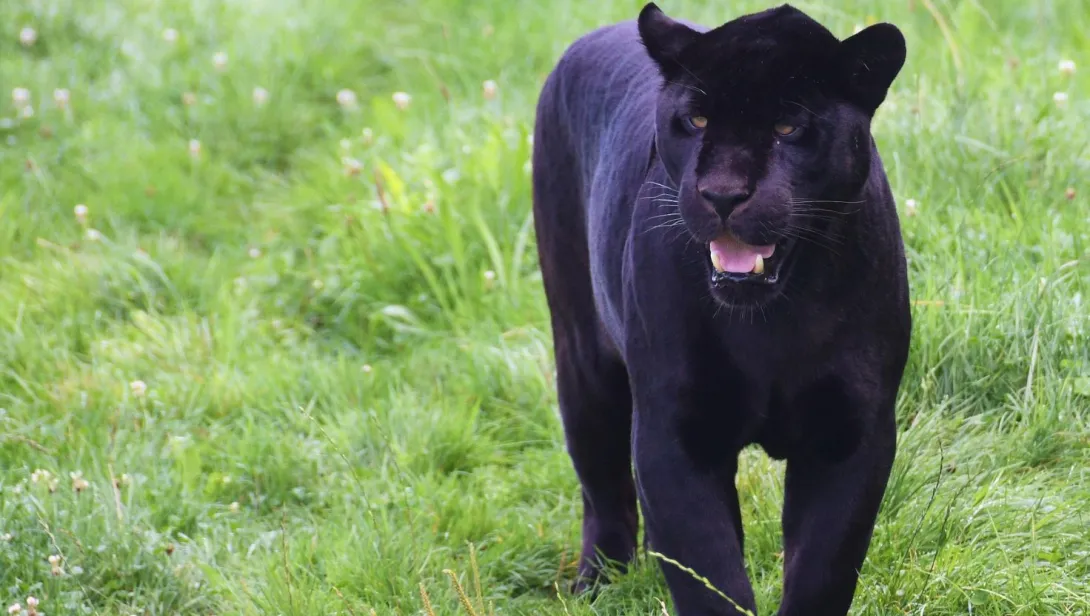Skip to main content
Introduction
- A Black Panther is not a separate species but a melanistic variant of big cats, primarily leopards (Panthera pardus) and jaguars (Panthera onca).
- Melanism is a genetic mutation that results in an excess of dark pigmentation, giving the animal a black coat.
- Black panthers are known for their mysterious and elusive nature, often associated with strength and stealth.
Physical Characteristics
- Black panthers have a jet-black coat due to the melanistic gene, but their rosette patterns are still visible under certain lighting.
- They have strong, muscular bodies, with leopards weighing up to 200 pounds (90 kg) and jaguars up to 250 pounds (113 kg).
- Their retractable claws and powerful jaws make them skilled climbers and hunters.
- Black panthers have excellent night vision, which aids in their nocturnal hunting.
Habitat and Distribution
- Black panthers are found in dense forests, swamps, and jungles of Asia, Africa, and the Americas.
- In Asia and Africa, black panthers are typically melanistic leopards, while in the Americas, they are melanistic jaguars.
- They prefer habitats with thick vegetation, which provides cover for hunting and protection.
Diet and Hunting
- Black panthers are carnivorous and hunt a variety of prey, including deer, wild boar, monkeys, and smaller mammals.
- They are stealthy hunters, relying on their dark coat for camouflage and their agility to ambush prey.
- Black panthers are nocturnal, hunting primarily at night when their dark fur provides an advantage.
- They are strong climbers and often drag their prey up trees to avoid scavengers.
Behavior and Communication
- Black panthers are solitary animals, except during mating season or when a mother is raising her cubs.
- They communicate through vocalizations such as growls, roars, and hisses, as well as through body language.
- Black panthers are territorial and mark their territory with scent markings and scratch marks on trees.
- They are elusive and secretive, making them difficult to study in the wild.
Reproduction and Lifespan
- Female black panthers give birth to 2 to 4 cubs after a gestation period of about 90 to 105 days.
- Cubs are born with a grayish coat and develop their black fur as they grow older.
- Cubs stay with their mother for 18 to 24 months before becoming independent.
- Black panthers have a lifespan of 12 to 15 years in the wild and up to 20 years in captivity.
Conservation Status
- Black panthers, as melanistic leopards or jaguars, share the conservation status of their non-melanistic counterparts.
- Leopards are classified as Vulnerable on the IUCN Red List, while jaguars are classified as Near Threatened.
- They are threatened by habitat loss, poaching, and human-wildlife conflict.
- Conservation efforts include protected areas, anti-poaching measures, and community-based conservation programs.
Unique Adaptations
- Their melanistic coat provides excellent camouflage in dense forests and during nighttime hunts.
- Black panthers have strong jaws and can crush the skulls of their prey with a single bite.
- They are excellent climbers and often rest or store prey in trees.
- Their nocturnal behavior helps them avoid competition with other predators.
Cultural Significance
- Black panthers are revered in many cultures as symbols of power, mystery, and protection.
- They are featured in mythology, literature, and art across the world.
- In some cultures, black panthers are associated with deities and spiritual guardians.
Fun Facts
- Black panthers are not a separate species but a color variant of leopards and jaguars.
- Their rosette patterns are still visible under certain lighting, despite their black coat.
- Black panthers are strong swimmers and are often found near water sources.
- They are keystone species, playing a crucial role in maintaining ecosystem balance.
- Black panthers are highly elusive and are rarely seen in the wild.
- They are not true panthers but are often referred to as such due to their dark fur.
Threats to Black Panthers
- Habitat loss due to deforestation and urbanization is a major threat to black panthers.
- Human-wildlife conflict often results in black panthers being killed by farmers protecting livestock.
- Poaching for their fur and body parts is a significant cause of their decline.
- Climate change is altering their habitats, making it harder for them to find prey.
Conservation Efforts
- Protected areas and wildlife reserves have been established to safeguard black panther habitats.
- Anti-poaching initiatives and stricter wildlife protection laws have helped reduce illegal hunting.
- Community-based conservation programs work to reduce human-wildlife conflict.
- Global awareness campaigns highlight the importance of black panther conservation and encourage public support.
